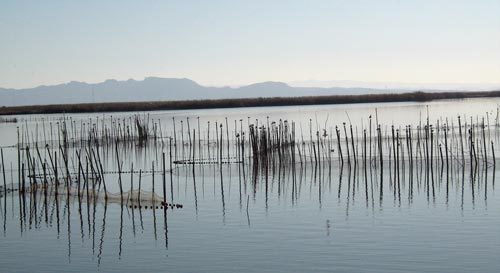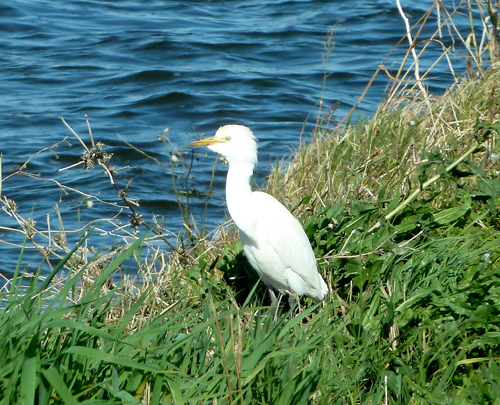On 3rd January we spent a few hours at the Natural
Park of Albufera de Valencia, a coastal wetland site just south of the
city of Valencia. This site is of significant European importance and
provides both critical breeding and wintering grounds for a vast range
of species. Today´s trip was not so much an intensive day´s birding, in
fact we only had a couple of hours as the main purpose of the visit was
a meeting with the management team of a relatively new bird reserve
within the park.
 |
| The main lake of Albufera de Valencia |
Our first stop was to scan the (flooded) rice fields that surround the main lake. We saw the main three Egret species; Little, Cattle and Great White plus hundreds of Shoveler in amongst which were Shelduck. Yellow Legged, Lesser Black Backed and Black Headed Gulls were present in good numbers too. We then moved on to a hide overlooking a smaller, sheltered lake where hundreds of Teal were over wintering. We also enjoyed superb views of Marsh Harrier and Booted Eagle. The seemingly ever-present Stonechats entertained us for a while but soon fled for cover as the Marsh Harrier made a low pass over the reeds. We then scanned over the main Albufera lake where we enjoyed superb views of Red Crested Pochard, Pintail, Shelduck and a gathering of Sandwich Terns.
 |
| Cattle Egret |
Even though we´d crammed in a little birding into what was a busy day, we still managed to see 44 species. The list for the day comprised Balearic Shearwater, Black Headed Gull, Black Redstart, Blackbird, Booted Eagle, Cattle Egret, Chaffinch, Chiffchaff, Collared Dove, Coot, Cormorant, Crag Martin, Fan Tailed Warbler, Glossy Ibis, Goldfinch, Great Crested Grebe, Great Tit, Great White Egret, Grey Heron, House Sparrow, Kestrel, Kingfisher, Lesser Black Backed Gull, Little Egret, Long Tailed Tit, Magpie, Mallard, Marsh Harrier, Moorhen, Pied Wagtail, Pintail, Pochard, Purple Gallinule, Red Crested Pochard, Red Legged Partridge, Robin, Sandwich Tern, Shelduck, Shoveler, Spotless Starling, Stonechat, Teal, Yelkouan Shearwater, Yellow Legged Gull.
No comments:
Post a Comment